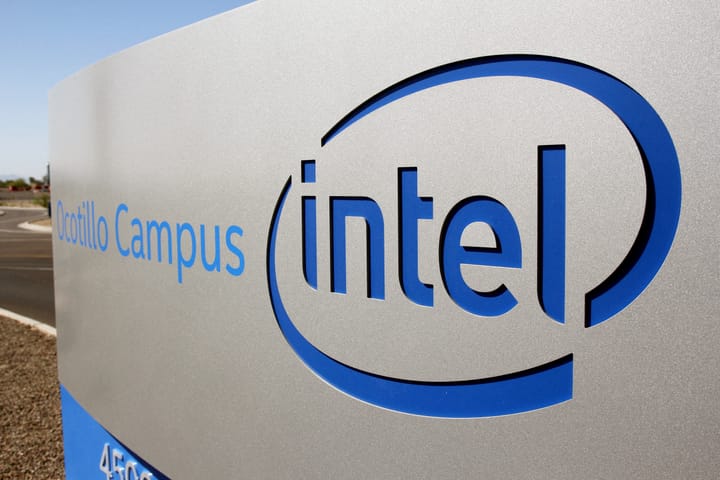US political party affiliations have swung away from Republicans and toward Democrats in 2020

A few minutes every morning is all you need.
Stay up to date on the world's Headlines and Human Stories. It's fun, it's factual, it's fluff-free.
With deepening partisanship and growing demographic divisions defining the American political landscape, the long-term prospects of each political party remain up in the air.
Recent polling by Gallup has found more Americans identify as members of the Democratic Party than the Republican Party (or GOP). Under President Donald Trump, a Republican, that disparity has grown. With Trump’s challenger, former Vice President Joe Biden, leading in the polls, a diminished party could be even worse news for the incumbent.
Much of Trump’s campaign in 2020 has been focused on painting Biden and the Democrats as too radical for “real” Americans, particularly in the suburbs. Yet, with a growing number of voters identifying as either Democrats or Independents who lean Democrat, the Trump-led Republican Party appears increasingly out of touch with a majority of the country.
The Democratic advantage
Gallup polling in June showed the Democratic Party had gained an 11-point advantage over the Republicans. That was based on the number of people who identified as Democrats (32%) or as Independents who leaned Democrat (18%). Only 26% of respondents identified themselves as members of the GOP, with 13% of independents saying they leaned Republican.
In the months since that 11-point difference was reported, the disparity in party affiliation has shrunk. In polling from July and early August, the difference was six points, with 42% of respondents being “Republicans + Republican leaners” and 48% being “Democrats + Democratic leaners.”
While that shift back toward Republicans is a positive sign for the president, the overall trend for 2020 has not been good for his party. In January and February, as Trump was facing an impeachment trial in the Senate, self-identified Republicans outnumbered self-identified Democrats.
Since March, though, when the COVID-19 pandemic began disrupting life in the country, Democrats have consistently outnumbered Republicans. The one exception was mid-April polling when party affiliations were split evenly at 46%.
According to Gallup, “Democrats typically hold an advantage over Republicans in party affiliation, which has averaged five points since Gallup regularly began measuring party identification and leaning in 1991. Double-digit Democratic advantages have been relatively uncommon.”
Republicans have never had a greater than 8-point advantage over Democrats in the nearly 30 years that Gallup has polled both party affiliation and the political leanings of Independents.
Do party affiliations matter?
In the week leading up the November 2016 election, when Trump won his first term, the polling difference was 46% to 43% in favor of the Democrats. In the week of the election, Democrats grew to 48% while Republicans remained at 43%.
Notably, Trump beat former Secretary of State Hillary Clinton in the electoral college, but received nearly three million fewer votes than her.
The fact that Trump won in 2016, even as more people identified as Democrats, suggests party affiliation is not a sufficient bellwether of voting patterns. More than a third of the country consistently identifies as independent of political allegiance – 41% in Gallup’s early-August 2020 polling.
Every election, pundits discuss the voting trend of “swing voters,” the unaffiliated voting bloc that theoretically could be swayed to vote for either candidate. FiveThirtyEight’s analysis of the 2016 election found swing voters went largely with Trump. Yet estimates of the percentage of the electorate who could be classified as swing voters varies wildly, from as low as 6% to as high as 30%.
After the 2016 election, a great deal of attention was given to the Obama-Trump voters, those who voted for Obama in 2008 or 2012 and then switched to Trump in 2016. Analysis by the University of Virginia’s Center for Politics put the number of such voters in a range between 6.7 million and 9.2 million. Even if the low-end number were true, that is a number that could easily determine an election.
President of the Red States of America
Trump frequently tweets about how high his approval numbers are with Republican voters (even as overall polling favors Biden). For instance, on June 8, Trump tweeted, “96% Approval Rating in the Republican Party. Thank you!” That was a one percentage point improvement from a December 5, 2019 tweet, itself a two percentage point jump from March 5.
As often as Trump tweets about his high approval among the Republican Party, he just as often criticizes “fake” and “phony” polls. The president touts his victory in the 2016 election, despite the long odds pollsters gave him, as proof his popularity is always higher than the polls. Some pundits believe a shy Trump voter base could mean polling does in fact underestimate his support.
On Wednesday, September 16, Trump stated that the United States’ COVID-19 numbers were “very low … if you take the blue states out.” The suggestion was that states run by Democrats (generally color-coded blue) were to blame for the crisis and should therefore not be counted against his leadership.
This tendency on Trump’s part to split the country into his supporters – Republicans and “red states” – and his detractors is often given as evidence that he has no interest in unifying the country. Instead of trying to grow his voter base, critics have said, Trump is focused on dividing the country.
The two-party system
The US has long had a two-party political system, with the Democratic and Republican Parties having dominated national politics for nearly two centuries. Every presidential election year, so-called “third parties” – particularly the Libertarian Party and the Green Party – attempt to make inroads on the national stage, but they have remained relegated to also-runs.
With deepening partisanship and growing demographic divisions defining the American political landscape, the long-term prospects of each political party remain up in the air.
Since the 90s, political scientists have argued that inevitable demographic shifts in the country – particularly, rising Black and Hispanic populations – will favor Democrats going forward. It’s a perennial prediction that, so far, has yet to pan out, at least in part because of the electoral college and the concentration of minority populations in densely populated urban areas.
These pundits and political scientists will be watching the 2020 election, not just to see if Trump’s divisive style of politics wins out again, but to determine if the shift toward Democrats in the 2018 midterm elections was a momentary blip or an ongoing trend.
Have a tip or story? Get in touch with our reporters at tips@themilsource.com




Comments ()